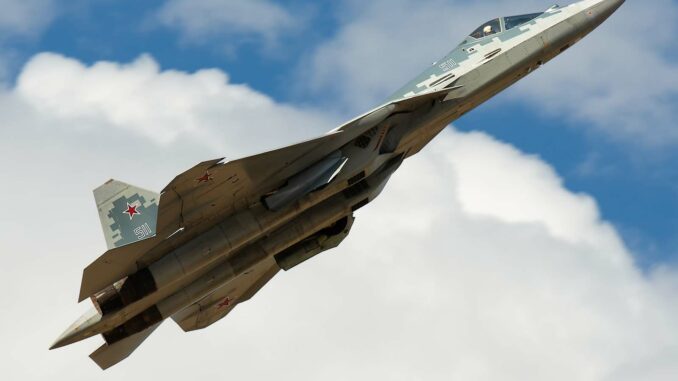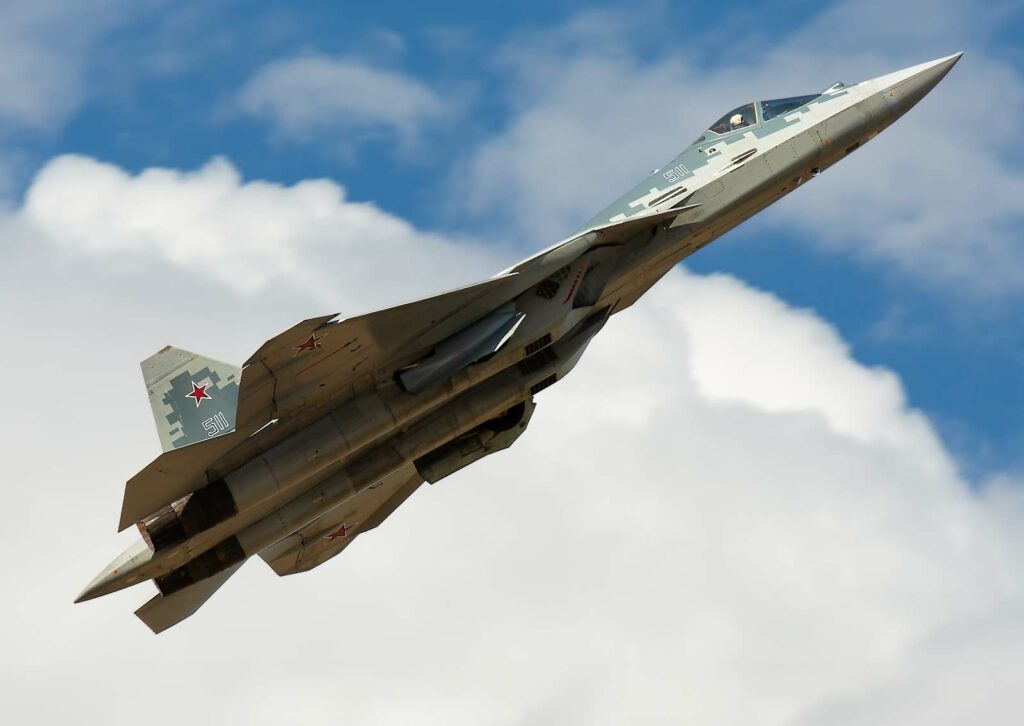
Discover the evolution of the Russian Air Force with the arrival of the Su-57. Technical analysis and strategic implications of these fifth-generation jets.
The Russian Air Force is set to reinforce its fleet with 76 Su-57 stealth fighters by 2027. Despite Western sanctions, this build-up reflects significant technological advances and could redefine the balance of air power on a global scale. The implications of these developments are far-reaching, affecting both military strategy and geopolitical dynamics.
The announcement of the imminent delivery of a series of fifth-generation Su-57 fighters to the Russian Air Force marks a significant strategic turning point. These aircraft, comparable to the American F-35, embody Moscow’s ambition to modernize its air arsenal in the face of contemporary challenges. This development takes place against a backdrop of heightened geopolitical tensions and economic sanctions, underlining the importance of Russia’s technological and military autonomy.
Technical characteristics of the Su-57:
Architecture and weapons: The Su-57, a fifth-generation twin-engine fighter, is equipped for multiple missions. It features R-77M air-to-air missiles for long-range aerial targets and Kh-59MK2 cruise missiles for ground targets.
Technological developments: The Su-57 program is constantly evolving, notably with the integration of the second-generation Izdeliye 30 engine, currently in the testing phase.
Strategic and geopolitical impact:
Balance of air forces: The introduction of the Su-57 into the Russian arsenal could change the balance of air forces on a global scale, offering Russia increased capability in a variety of theaters of operation.
Consequences of Western sanctions: Despite the restrictions imposed, Russia has maintained the development of its air programs, demonstrating significant resilience and technological independence.

The Su-75 Checkmate project:
The UAC is also working on the Su-75 Checkmate prototype, whose maiden flight, originally scheduled for 2023, has been postponed to 2024. This program underlines Russia’s continuing ambition to position itself as a key player in the global military aircraft industry.
The two-seat version of the Su-57:
The development of a two-seat version of the Su-57 aims to increase its versatility. This variant will enable combat training, drone formation coordination and weapons deployment operations, dividing tasks between two crew members for greater efficiency.
Russian progress in the field of fifth-generation combat aircraft, symbolized by the Su-57, represents a significant milestone in international air competition. Despite external constraints, Russia is demonstrating its ability to innovate and adapt, raising crucial strategic and geopolitical questions for the future. These developments could redefine the norms of modern air warfare and influence the balance of power on the world stage.
War Wings Daily is an independant magazine.